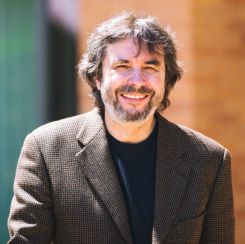
The Commemoration of All the Faithful Departed, also known as the Feast of All Souls, is a time dedicated to fervent prayers for our dearly departed. Remembering those close to us who have recently passed is a profoundly intimate and emotional act. It also ushers forth existential reflections on the fragile nature of life, the transient world we inhabit, and the inevitable reckoning of our own mortality.
What, then, when considering our mortality, is the spiritual response that aligns most closely with the fundamental teachings of Jesus? In Garden of Gethsemane, when faced with the harrowing prospect of a painful crucifixion, Jesus implored the Father to avoid it. He yearned to fulfill his divine mission without enduring such agony. St. John’s account of the raising of Lazarus from the dead sheds light on this question. Confronted with the sorrow and emotional turmoil of Lazarus’s family and friends, Jesus did not merely offer comforting words about Lazarus being in a better place. Despite knowing that Lazarus would soon return to life, Jesus was deeply moved and wept. Why? His motivation was one of compassion, a profound empathy and love for those who were in the grip of grief.
As part of this year’s celebration of All Souls’ Day at St. Anselm Parish in St. Louis, our rejuvenated Vox Fidentium Ensemble will perform a composition based on the antiphon, “Media Vita.” This brief prayer encapsulates a wide spectrum of human emotions: pain, weakness, repentance, passion, despair, faith, acceptance, and hope. Originally a part of the Compline of the Fourth Sunday of Lent, it was attributed to Notker the Stammerer, a Benedictine monk of the St. Gallen community who was also renowned as a poet and musician. However, modern scholarship has not definitively confirmed this attribution. Beyond its liturgical role, “Media Vita” was sung as a hymn to implore God’s aid in times of public need:
In the midst of life we are in death
of whom may we seek for succour,
but of thee, O Lord,
who for our sins
art justly displeased?
O holy God,
O holy and strong,
O holy and merciful Saviour,
deliver us not to bitter death.
Notably, the second part of this text commences with the Trisagion (indicated in bold) – one of the earliest Christian prayers still in use in both Eastern and Western traditions. In the Roman Catholic Church, the Trisagion is employed once a year during the Good Friday liturgy as part of the “Reproaches” (Improperia). Originally, two choirs chanted this formula, alternating between original Greek (beginning with the words “Hágios ho Theós”) and Latin responses (Sanctus Deus). The Trisagion prayer unites the concept of the Holy Trinity with a penitential plea.
Incorporating the Trisagion formula within “Media Vita” establishes a connection between themes of death, God’s mercy, and repentance with the Good Friday liturgy. Nevertheless, the circumstances differ. In the account of Lazarus’s resurrection, Jesus expressed compassion for those in mourning, while in the poetic prayers of the Reproaches, Jesus laments the absence of empathy for his goodwill and suffering, akin to rejection.
Historically, the “Media Vita” antiphon held a nearly mystical significance. Today, many centuries after its inception, its importance endures. Human life remains as precarious as ever. Despite medical advancements and an increased average lifespan, death remains our unavoidable destination. Similarly, our faith’s perspective on the phenomenon of death persists: our sins have offended God, and merited death. Consequently, God remains our sole hope, as only the Author of Life is powerful enough to turn sin’s punishment into a gateway to eternal life. “Media Vita” invokes the sacred names of God to offer praise and implore His mercy, mirroring the intention of the Mass for the Dead, which is dedicated to the repose of the souls of the departed faithful for whom we pray today.
Check out a live performance of In Media Vita as directed by Dr. Andrzej Zahorski below!

Andrzej Zahorski is Director of Music at St. Anselm Parish in St. Louis, MO. He holds a doctorate of musical arts from Stanford University.